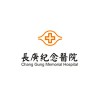
Central Venous Catheter Colonisation Among Critically Ill Patients in Intensive Care Units
SepsisSeptic Shock6 moreBackground: Central Venous catheter insertion technique and indwelling time are major risk factors for CVC colonisation. Colonisation occurs through microbial migration and biofilm formation along the catheter insertion tract. This study set out to determine the prevalence and associated factors for central venous catheter colonisation among critically ill patient. No data exists in this clinical setting addressing this topic. Methods: The study population included 100 participants with central venous catheters in situ for at least 24 hours. Catheter tip (distal 5-cm segment) and blood cultures (10mls peripheral blood) were obtained at the time of catheter removal.

Consistency of Automated Neuropsychological Assessment Metrics (ANAM) Performance in Those With...
Mild Traumatic Brain InjuryPost-Concussive SymptomsThe purpose of this project is to explore the degree to which performance consistency on neuropsychological measures varies in a sample of Operation Iraqi Freedom (OIF)/Operation Enduring Freedom (OEF) Veterans with a history of mild traumatic brain injury (mTBI) with persistent self-reported symptoms.

MEG and DTI of Neural Function and Connectivity in Traumatic Brain Injury
Traumatic Brain InjuryPost-concussive SymptomsThe overall hypothesis is that the long-term cognitive and behavioral sequelae of traumatic brain injury (TBI) are due to selective disruption of the long association white matter tracts of the cerebral hemispheres, with resulting functional impairment of the network of cortical regions that are interconnected by these long-range association pathways. We propose that traumatic white matter injury can be measured with diffusion tensor imaging (DTI) and that the impaired cortical activation can be detected with magnetoencephalography (MEG), and that the results of these imaging examinations will correlate with neurocognitive status and functional recovery after TBI.

Evaluate the Effectiveness of Brain Network Activation (BNA™) Technology in the Management of Sport...
Minor Traumatic Brain Injury (TBI)Currently, there is no direct, reliable, bed-side, and non-invasive method for assessing changes in brain activity associated with concussion. Event Related Potentials (ERPs), which are temporal reflections of the neural mass electrical activity of cells in specific regions of the brain that occur in response to stimuli, may offer such a method, as they provide both a noninvasive and portable measure of brain function. The ERPs provide excellent temporal information, but spatial resolution for ERPs has traditionally been limited. However, by using high-density electroencephalograph (EEG) recording spatial resolution for ERPs is improved significantly. The paradigm for the current study will combine neurophysiological knowledge with mathematical signal processing and pattern recognition methods (BNA™) to temporally and spatially map brain function, connectivity and synchronization. The proposed study will provide additional evidence for the utility and contribution of the BNA™ test (reflecting temporal and spatial changes in brain activity as well as brain functional connectivity associated with concussion) in concussion management.

Amyloid Accumulation After Mild Traumatic Brain Injury
Traumatic Brain InjuryThere will be 200 participants, who aged 30 years or older with TBI in 1,5,10,15 years ago and GCS=13-15 will be recruited. Another group of 200 participants with the same age and gender and without TBI will be recruited as the controls. All of them will undergo AD8 questionnaire for dementia screening and APOE4 genotyping. Further CASI and CDR will be tested for the confirmation of dementia diagnosis for the individuals with AD8 scaore >/=2. 10 TBI with dementia, 20 TBI without dementia and 10 controls will be selected randomly for AV45 amylid PET study. There will also be 10 participants without traumatic brain injury and interested in this study, aged 55 years or older better.

Therapeutic Resources for Attention Improvement With Neuroimaging for TBI
Traumatic Brain InjuryOne of the most common symptoms suffered by traumatic brain injury (TBI) patients is disruption in attention. Lack of attention impacts daily life including academic or professional tasks, and interpersonal relationships. The focus of Therapeutic Resources for Attention Improvement with Neuroimaging for Traumatic Brain Injury (TRAIN-TBI) is to investigate the changes in neurological function with special interest in attention after TBI for children ages 8 to 16. This study will be done through advanced neuroimaging procedures, neurocognitive testing, and an online training tool created by The Brain Plasticity Institute. The investigators hypothesize that the training will improve attention in TBI subjects and that the advanced imaging will show corresponding neural connectivity changes, as compared to matched healthy controls.

A Prospective Study of Brain Network Activation (BNA) Changes in High School Athletes Following...
Mild Traumatic Brain InjuryThe main purpose of this study is to prospectively examine changes in Brain Network Activation(BNA)following concussion in high school athletes. In addition, the study will examine the relationship between changes in BNA to symptoms, cognitive performance and vestibular function from baseline to 1-7, 8-14 and 15-21 day post injury intervals in high school athletes with concussion.

Comparison of Brain Network Activation (BNA™) Analysis, Clinical Symptoms and Neuro-cognitive Performance...
Traumatic Brain InjuryThe use of Event Related Potentials (ERP) and neurocognitive performance in patients following concussion has been examined previously in small cohorts and relatively long after concussion occurred. However, little is known about the immediate changes in brain activity in specific brain regions and connectivity across them associated with performance on specific neurocognitive tests following a concussion, and the subsequent changes over time. The proposed study will provide initial evidence for the feasibility of an ERP based biomarker for concussion reflecting temporal and spatial changes in brain activity as well as brain functional connectivity associated with concussion.

Predicting Cognitive and Emotional Health From Neurocircuitry Following TBI
Traumatic Brain InjuryAbnormalities in structural and functional connectivity between brain regions have been suggested as putative biomarkers of mild traumatic brain injury (TBI) and significant contributors to neuropsychological functioning and injury outcome. The purpose of this study is to use two advanced magnetic resonance imaging (MRI) techniques called diffusion-weighted imaging (DWI) and resting state functional MRI to compare structural and functional connectivity between individuals with documented mild TBI and healthy controls. To evaluate the significance of structural and functional connectivity for behavior, the brain imaging data will then be related to measures of cognition and emotion. Over a 4-year period, 150 adults with documented mild TBI and 30 healthy controls will participate in the study. The study will investigate the following questions and hypotheses: Evaluate the DWI metric fractional anisotropy (FA) as a measure of white matter integrity across multiple stages of recovery following mild TBI relative to healthy controls. It is hypothesized that mild TBI will be associated with greater white matter abnormalities than healthy controls. It is hypothesized that there will be a relationship between FA, cognition and emotion as a function of the injury. It is hypothesized that functional connectivity will be related to FA.

Measuring Signatures in the Fluid Surrounding the Spinal Cord in Patients Who Have Problems With...
Cerebral PalsyMultiple Sclerosis2 moreThe purpose of this study is to record signatures from the fluid surrounding the spinal cord from people who have an implanted drug infusion system.
